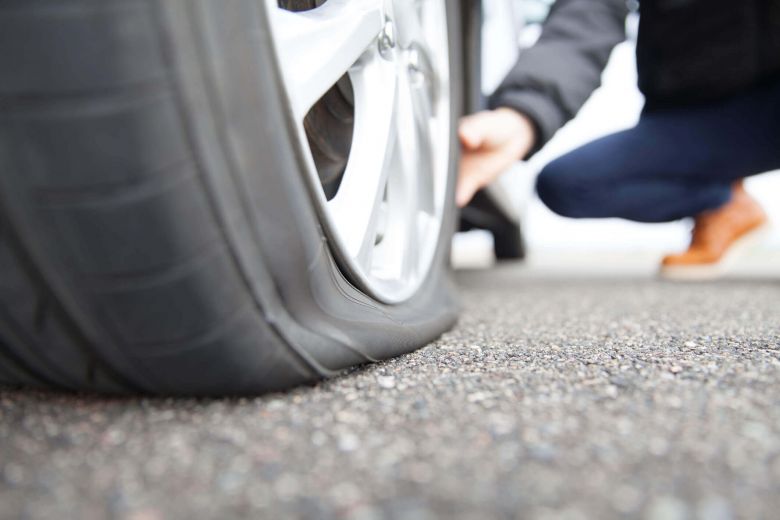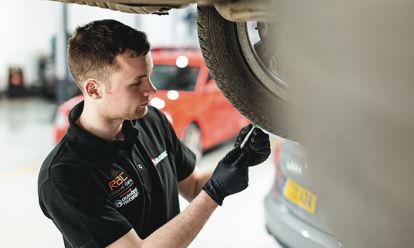Unlike a sudden puncture, which can cause a tyre to deflate rapidly, a slow puncture causes a steady loss of air pressure – no matter if you are driving or the vehicle is parked.
Tyre safety is vitally important for all drivers as keeping the tyres themselves in the best condition possible can prevent accidents from happening.
How can a slow puncture happen?
There are various reasons why a slow puncture may occur on your tyres as you drive across the UK, but there are several that all drivers should always be aware of.
The most common culprit for a slow puncture in your tyres is by having small puncture, often caused by a nail, screw, or other sharp object embedded in the tread. This allows air to slowly escape from the tyre. Larger objects will cause an instant flat or for the tyre to explode.
Another regular issue seen by mechanics when it comes to slowly deflating tyres is a faulty valve stem. This is the small rubber protrusion through which air is added to the tyre when changing the tyre pressure. If the valve is damaged, it can lead to slow air leakage.
Improper car maintenance or tyre safety management can lead to cracked, bulging or damaged tyres. Any of these can lead to a loss of air in the tyre and impact its structural integrity. If this happens, then the tyre will need to be replaced.
Symptoms of a slow tyre puncture
Detecting a slow tyre puncture can be challenging because the pressure loss is steady and may not be easily noticeable to drivers.
However, there are signs to watch out for when you are behind the wheel.
The easiest way to keep an eye out for a deflating tyre, is to regularly check your tyre pressure. This can be done at home with a special device or at your local petrol station.
If you have noticed uneven tyre wear, then this could indicate a slow puncture.
Take your car to your local trusted garage and look to buy new tyres.
If you continue to drive on underinflated tyres, this can lead to further damage to your vehicle and compromise your safety on the road.
How long does a slow puncture take to go down?
As there are many ways in which a tyre can suffer from a slow puncture, there is no way to give a definitive time for how long the air has until it leaves the tyre.
This can take hours, days or even up to a week.
However, it is important to get it seen by a mobile mechanic or taken to a local garage as soon as possible.
Can you fix a slow tyre puncture?
Although getting a new set of tyres is the best option, you can sometimes repair a slow tyre puncture.
However, this will need to be done by a mechanic or specialised ‘tyre technician’.
They may be able to make a temporary fix to the tyre as long as there is no serious damage.
If the puncture is less than 1/4 inch (6mm) in diameter, then there is a chance it can be saved. Any larger and it is not repairable.
However, if there is a puncture anywhere on the sidewall, then the tyre cannot be repaired at all.
Although it is technically possible to repair older and more worn out tyres, it is not worth it as they will need to be replaced imminently. This is also the case if it is an older tyre that has already had some repairs done to it.
At the annual MOT or at your next car service, your tyres will be professionally checked for any damage.
Sometimes this can lead to an immediate replacement of the tyre – or they will give you an indication of when you should get a new set of tyres.
It's important to note that tyre repair is not always a guaranteed solution.
Can you drive with a slow tyre puncture?
Driving with a slow tyre puncture is generally not recommended for several reasons.
Even though it might be tempting to do so, if the air loss is gradual, it could start leaking air at a faster rate at any moment.
A tyre with low pressure, even if it's just a slow puncture, can affect the handling, stability, and braking performance of your vehicle.
Also, by continuing to drive with a damaged tyre can cause further problems with the vehicle – and will cost a lot more to fix.
Overall, you can drive to a local garage or tyre shop – but extended drives are dangerous with a slow puncture tyre.











